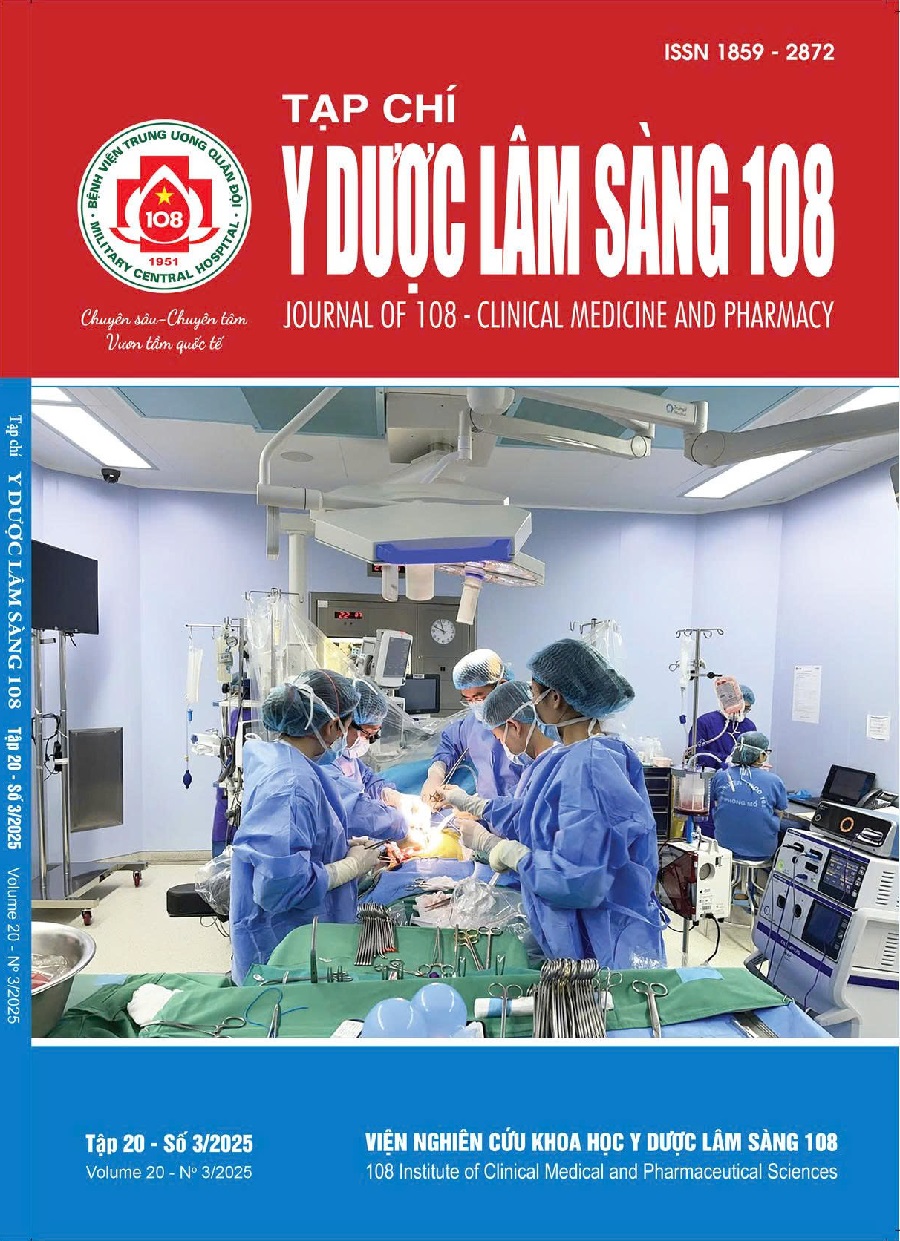Assessment of the neuromuscular blockade reversal of sugammadex in patients using high-flow oxygen during apnea after endoscopic vocal cord surgery
Main Article Content
Keywords
Abstract
Objective: To evaluate the efficacy and side effects of reversing neuromuscular blockade using sugammadex in patients using high-flow oxygen during laryngeal surgery. Subject and method: A prospective study was conducted on 122 patients undergoing laryngeal surgery at 108 Military Central Hospital from October 2022 to December 2024 using high-flow oxygen under general anesthesia, rocuronium neuromuscular blockade, and complete apnea. Monitor neuromuscular blockade with a TOF watch and monitor BIS anesthesia depth. After the end of the surgery, reverse neuromuscular blockade with sugammadex at a dose of 2mg/kg when the second stimulus in the series of 4 TOF stimuli (T2) appears. Monitor TOF and hemodynamic (pulse, blood pressure), respiratory (SpO2, TcCO2, respiratory rate) indices, and evaluate the effect of neuromuscular blockade recovery, BIS anesthesia depth, recovery time, and other adverse effects. Result: The average anesthesia time was 30.06 ± 2.03 minutes, and the average rocuronium dose was 42.54 ± 8.58mg. The average recovery time from T2 to TOF reaching 0.5, 0.7, and 0.9 were 1.25 ± 0.38 minutes, 1.83 ± 0.46 minutes, and 2.26 ± 0.52 minutes, respectively. After 6 minutes, all patients had a TOF index of 0.9; the average recovery time was 4.30 ± 1.37 minutes, and all patients were fully conscious after surgery. Two patients had bradycardia after sugammadex injection, no cases of muscle re-relaxation after surgery, and no other side effects on the circulatory and respiratory systems were detected after muscle relaxation. Conclusion: Reversal of rocuronium neuromuscular blockade after laryngeal surgery using high-flow oxygen during respiratory arrest with sugammadex 2mg/kg is effective, has a rapid recovery effect on the neuromuscular blockade, is safe, and has little effect on respiration and circulation.
Article Details
References
2. Beng Leong L, Wei Ming N, and Wei Feng L (2019) High flow nasal cannula oxygen versus noninvasive ventilation in adult acute respiratory failure: A systematic review of randomized-controlled trials. European Journal of Emergency Medicine 26(1): 9-18.
3. Wu X (2014) Rocuronium blockade reversal with sugammadex and neostigmine randomized study in Chinese and Caucasian subjects. BMC Anesthesiology.
4. Güleç N, Sarıkaş CM, Yeksan AN, Oba S (2015) Comparison of decurarization using sugammadex and neostigmin after rocuronium during desflutan anesthesia. Kafkas Journal of Medical Sciences (2): 48-53.
5. Stourac P, Adamus M, Seidlova D et al (2016) Low-dose or high-dose rocuronium reversed with neostigmine or sugammadex for cesarean delivery anesthesia: a randomized controlled noninferiority trial of time to tracheal intubation and extubation. Anesth Analg 122(5): 1536-1545.
6. Sacan O, White PF, Tufanogullari B, Klein K (2007) Sugammadex reversal of rocuronium-induced neuromuscular blockade: A comparison with neostigmine-glycopyrrolate and edrophonium-atropine. Anesthesia and Analgesia 104: 569-574.
7. Koo BW, Oh AY, Seo KS, Han JW, Han HS, Yoon YS (2016) Randomized clinical trial of moderate versus deep neuromuscular block for low pressure pneumoperitoneum during laparoscopic cholecystectomy. World J Surg 40(12):2898-2903.
8. Carron M, Gasparetto M, Vindigni V, Foletto M (2014) Laparoscopic surgery in a morbidly obese, high-risk cardiac patient: The benefits of deep neuromuscular block and sugammadex. Br J Anaesth 113(1): 186-187.
 ISSN: 1859 - 2872
ISSN: 1859 - 2872
